The determination and resilience of Antakya
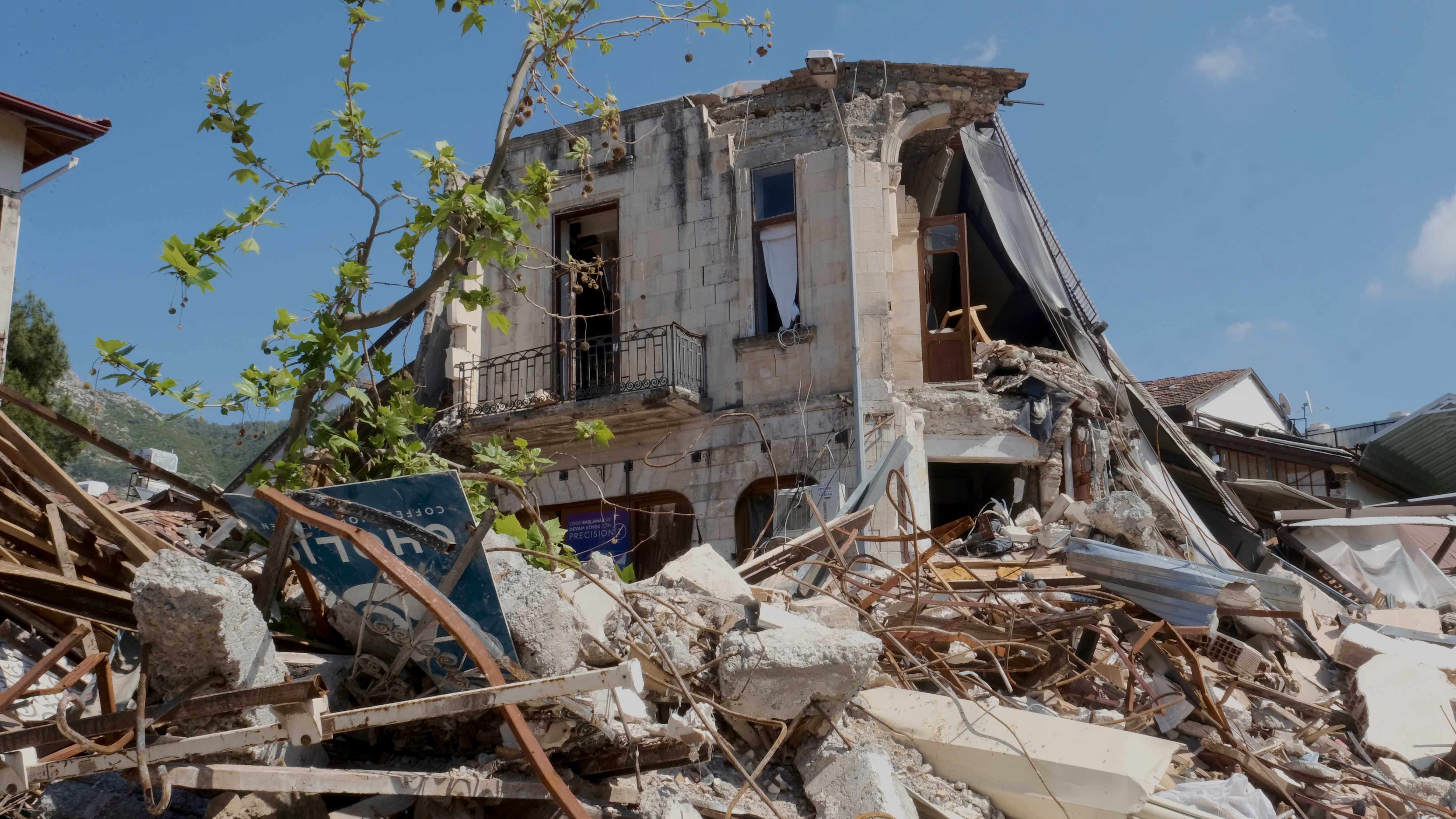
"Phrases such as 'It was a very beautiful city, I regret not seeing it before the earthquake' are the ones that upset and anger Antakya's residents the most," says psychiatrist Prof. Selçuk Candansayar, who spent some time in the devastated city in April.
He, like many others who were there, admires Antakya immensely, having also spent time there before the earthquakes struck southern Turkey and northern Syria on 6 February, killing over 50,000 people. Candansayar shares the widely held belief that Antakya – with its rich heritage, history and people – will rise again.
Anyone who visited Antakya before the earthquakes will be familiar with the feeling of having a special connection with the city after walking its cheerful, lively streets. This cheerfulness is part of the city's heritage, as illustrated by one of its famous mosaics from the 3rd century BC, which shows a skeleton holding a drink and bearing the inscription: "Be cheerful and enjoy life" in ancient Greek. This mosaic was discovered in the city in 2012 during construction work.
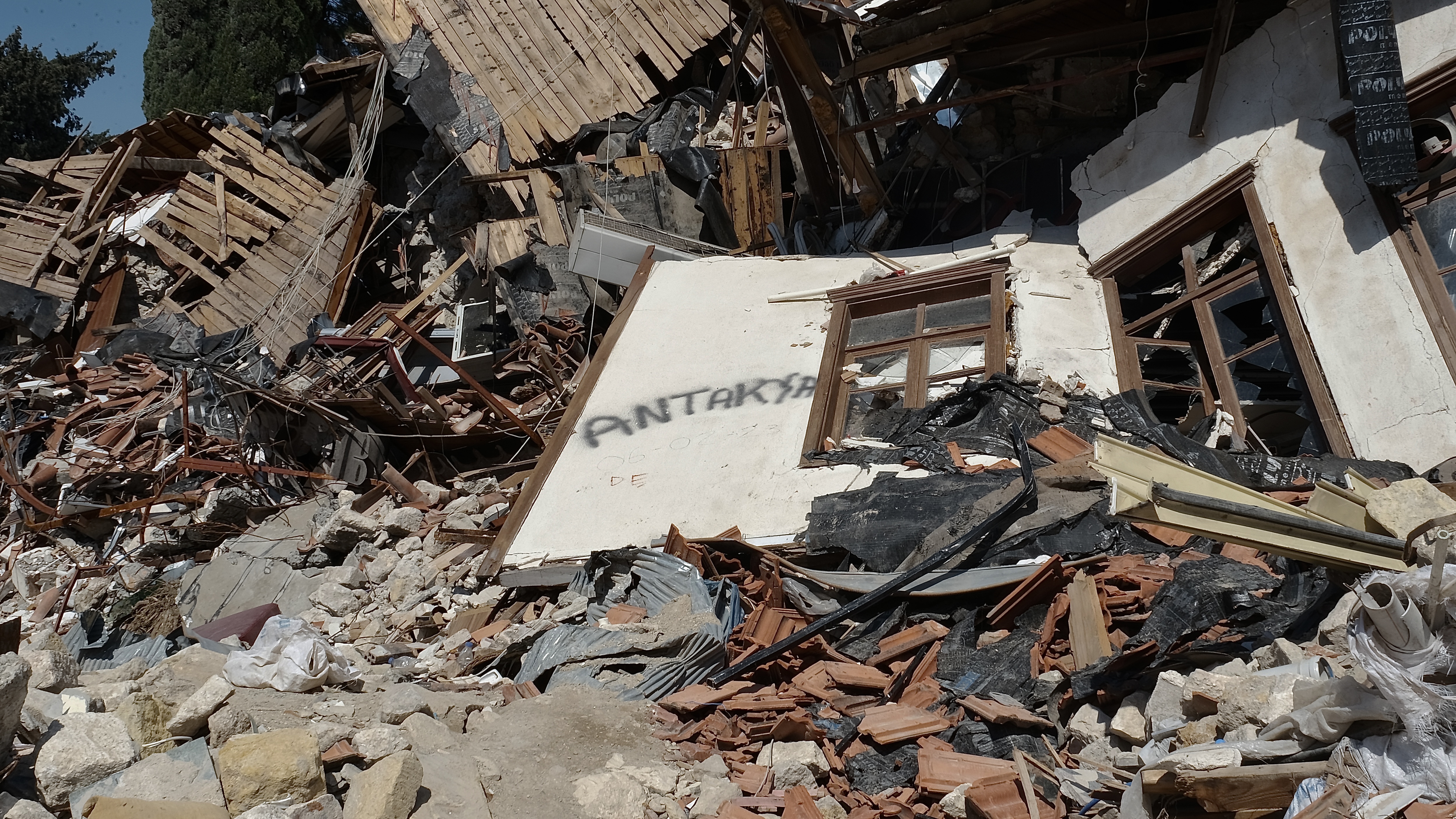
City with a long, rich and diverse history
Antakya is the modern name for the ancient city of Antioch, which was built around 300 BC and is located in south-eastern Turkey. It is known as a "crossroads of civilizations", is famous for its unique and extremely diverse cuisine and has long been both home to people from a wide range of religions and a destination for modern-day tourists and pilgrims.
The city is also home to the Civilization Choir, whose members are drawn from Turkey's Alevi, Sunni, Catholic, Orthodox, Armenian and Jewish communities. The choir sings in 12 different languages, including Turkish, Aramaic, Arabic, Hebrew, Armenian, Kurdish and Greek. Sadly, it lost seven of its members in the earthquakes.
The joy of life in pre-earthquake Antakya has now been replaced by deep sorrow and mourning. A tweet by a local named Sergen compares the city as it is now with how it was before the disaster. The tweeted video combines two pieces of footage: one shows a local street performer, Cem Demirel, playing his guitar amid the destruction caused by the earthquakes and the other shows people dancing before the disaster. Both videos were shot at the same spot. "We lived very happily in Antakya; the ones we lost were bright, lively people... How many people in the world have buried their city, I wonder?" reads Sergen's tweet.
Despite the deep sorrow felt by the city's inhabitants, it is impossible not to notice their resilience and strong desire for recovery. Right after the earthquakes, locals set up several civil society organisations and initiatives to rebuild their beloved city, with all the monuments and locations that have an important place in their collective memory.
Throughout its history, Antakya has survived several destructive earthquakes. But – as both inhabitants and admirers of the city frequently remind each other – the city has always risen again. Both groups are hopeful about the city's future.
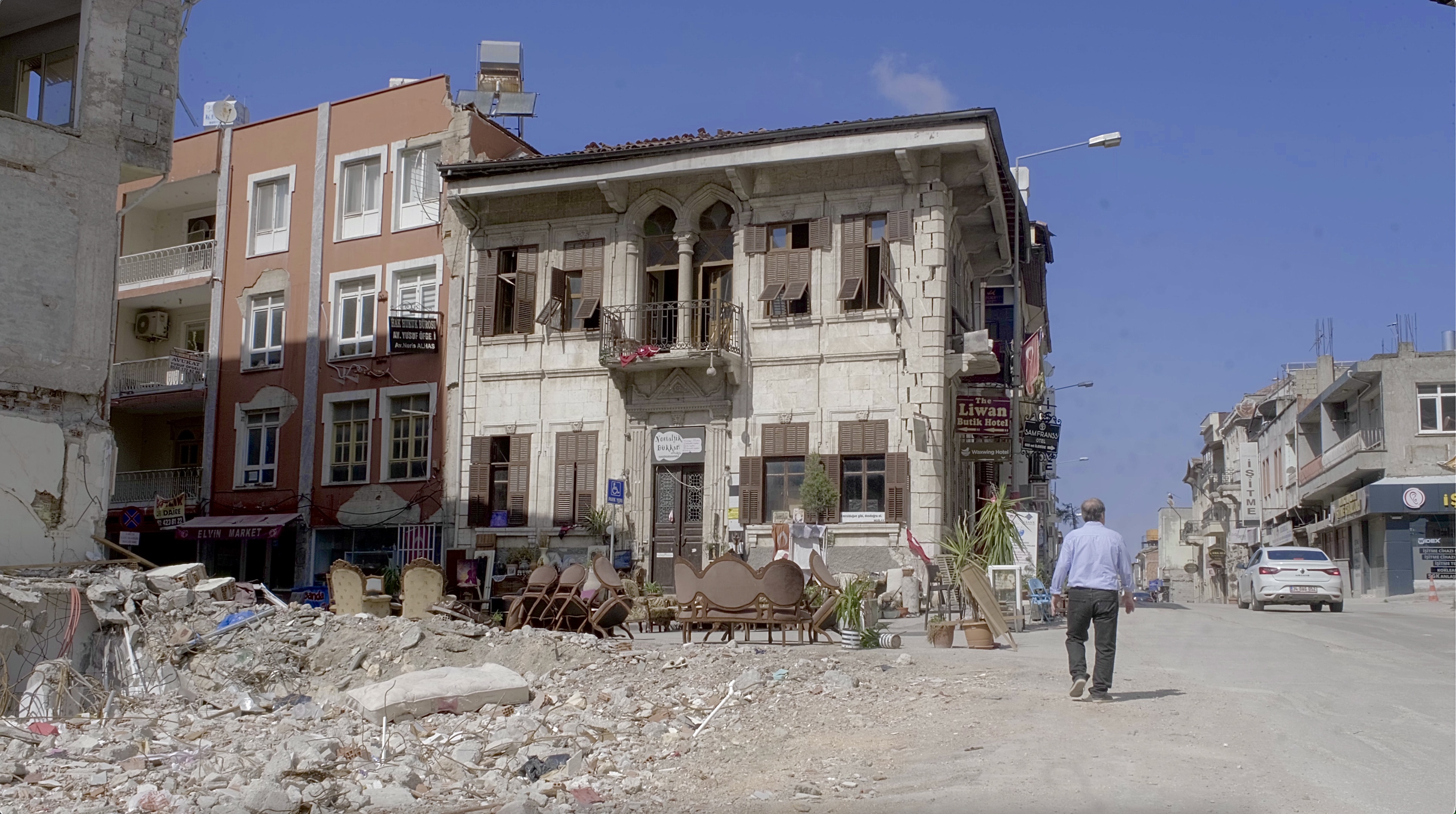
Hasty rubble removal risks erasing heritage, memories
That being said, people are aware that rebuilding the city will not be easy, especially as a result of the poorly thought out and hasty plans of the government, which did not consult locals. The government, which faces presidential and parliamentary elections on 14 May, has promised to reconstruct the city within a year.
More than 20 civil society organisations in Antakya responded to the government's plans by issuing a statement pointing out that such a hasty removal of rubble will damage the city's cultural heritage. Locals are calling for the rubble to be removed under the watchful eye of experts and stress that historical and valuable construction materials – such as original walls, stone and historical doors – can be reused. To draw attention to the issue, Antakya's inhabitants recently formed a human chain, holding a banner that said "It is heritage, not debris".
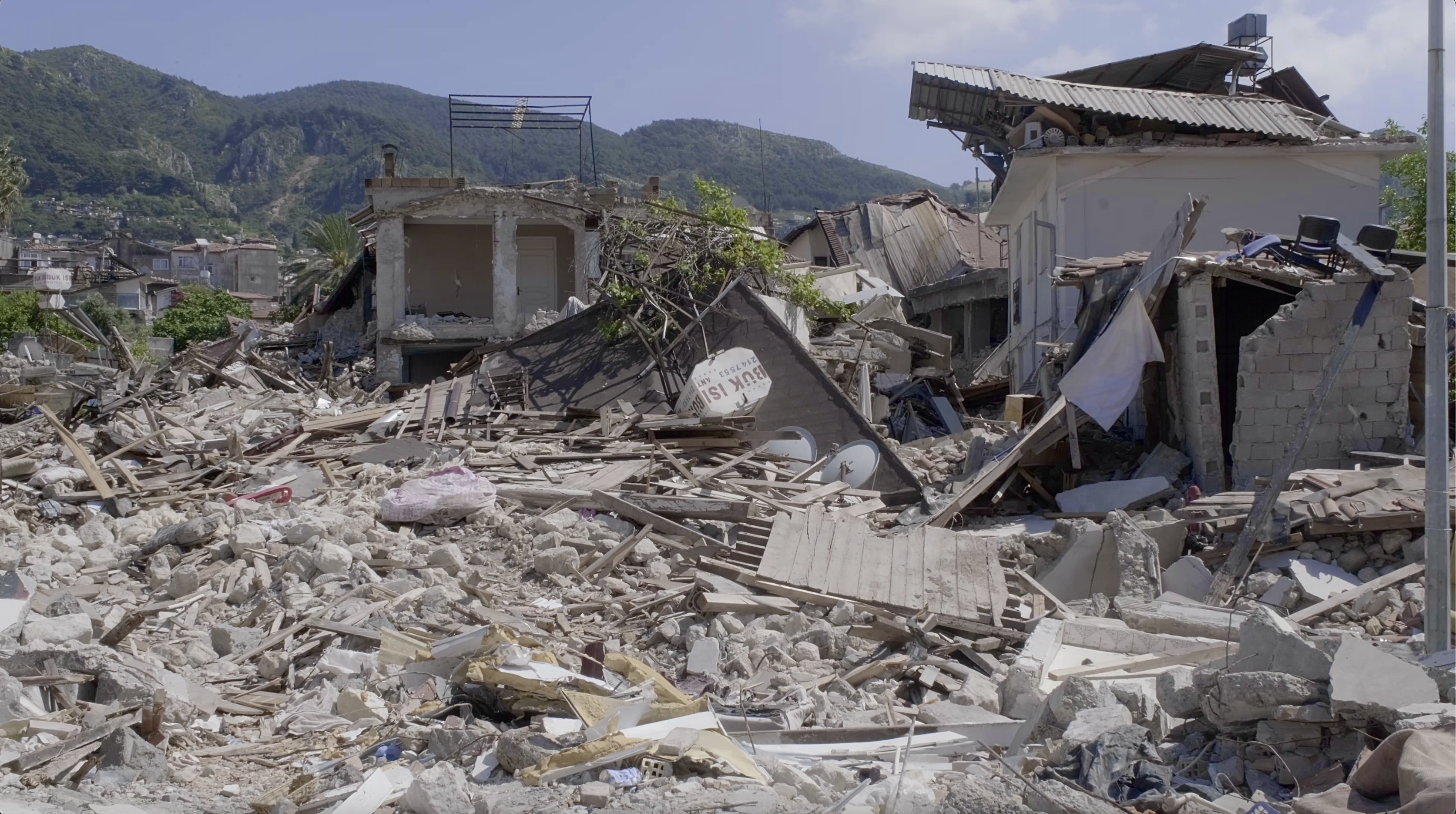
A unique, multifaith community
Antakya's heritage is truly unique. It is the largest district in Hatay province, the logo of which includes a crescent, a Star of David and a cross due to the close proximity of historical mosques, churches and a synagogue in the district – all of which collapsed during the earthquakes.
The dome, minaret and walls of Habib-i Neccar Mosque, which is considered to be one of the oldest mosques in Anatolia, were destroyed. The mosque is home to tombs believed to belong to the apostles Yuhanna (John) and Pavlus (Paul), who came to Antioch to spread the teachings of Jesus. The New Testament says that it was in Antioch that Christians were first referred to as Christians. Both the Saints Peter and Paul Greek Orthodox Church and the Antioch Protestant Church, which was built in the 1920s and served as a French Embassy before becoming a church, were decimated and can no longer be used.
Apart from these religious buildings, the world's first illuminated street, Herod Street (Kurtuluş Caddesi), and its surroundings lie in ruins. The famous Affan Coffee Shop, which is one of the symbols of the city on Herod Street and is deeply engrained in the memories of both locals and visitors alike, was badly damaged. The historical Uzun Bazaar (Sûk it-Twîl), located between Herod Street and the Orontes River, is also gone.
Antakya's residents want all these structures back, but they are concerned that the rush to rebuild the city could threaten its unique character and communities. They are particularly worried about a presidential decree issued on 5 April that made Herod Street and its surrounding areas subject to a law that is widely seen as a gentrification law.
Vildan Kaya, a city planner who is familiar with cases where this law has been implemented, told Qantara.de that until now, this law has not helped the preservation of cultural heritage anywhere in Turkey.
"In Istanbul in particular, the implementation of this gentrification law has harmed the city. New, tall, expensive buildings that lack soul have been built. Social and cultural interaction have been neglected. This is not city planning. The former inhabitants of these areas were forced to leave their homes and their lives," she said.
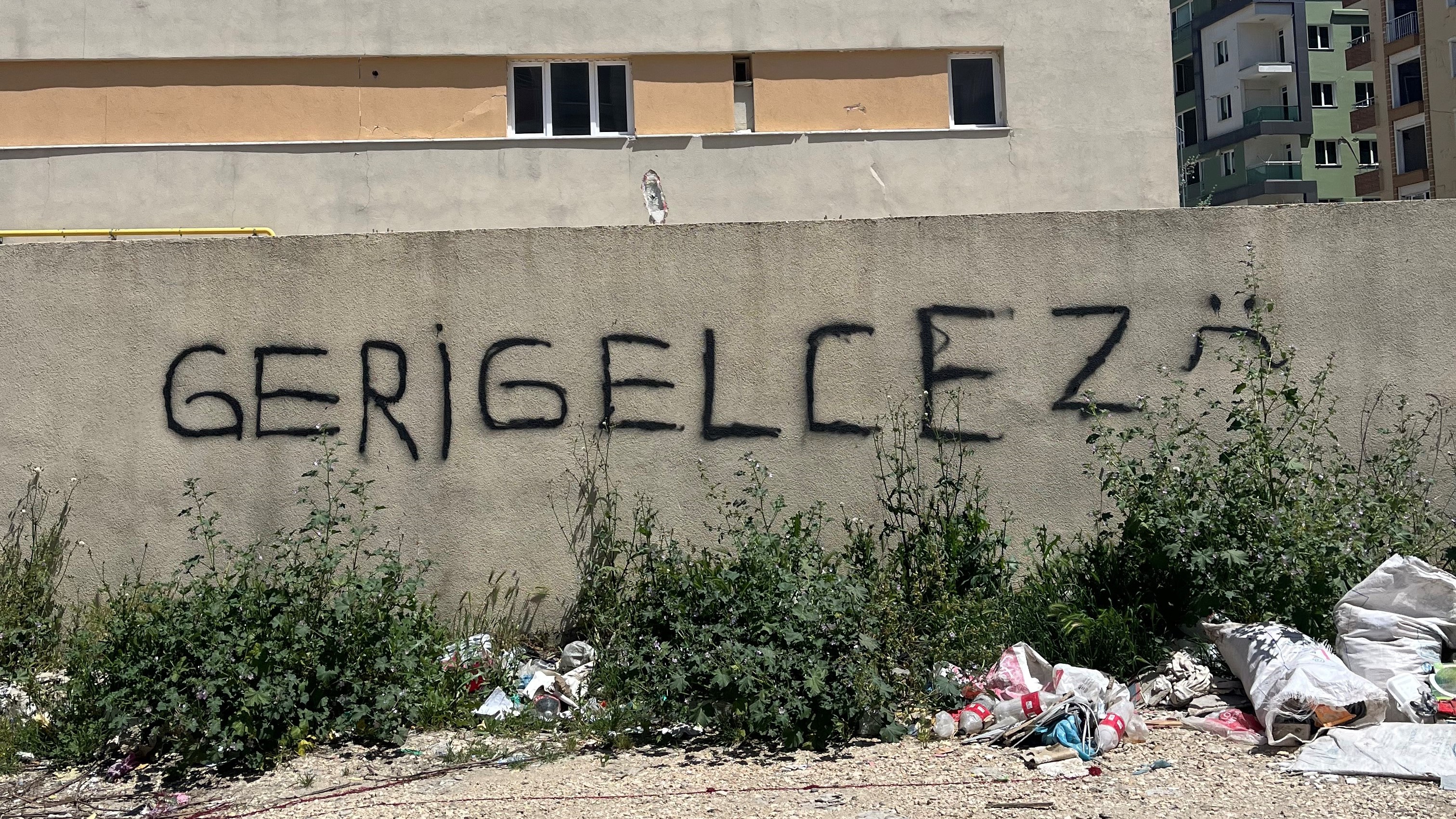
'We will come back'
The city's bar association shares the same view and took the presidential decree to the Council of State on 28 April, pointing out that the property rights of former inhabitants are under threat and that Antakya runs the risk of being stripped of its cultural heritage.
What makes Antakya beautiful is its distinctive social fabric, its social coherence and its diverse population, said Emre Can Daglioglu, editor at the online platform Nehna, which promotes awareness on Antakya's Orthodox identity. "Let's face it, the Jewish and Christian communities were already diminishing in numbers. We should find a way to return all communities to the city," he told Qantara.de. "Otherwise, the rebuilding of Antakya might be limited to its historical buildings. It is the demography we have to protect, too," he added.
The people of Antakya are determined to rebuild their city and to return. Just like the graffiti that has been daubed on many walls all over the city, they say "We will come back".
Ayse Karabat
© Qantara.de 2023